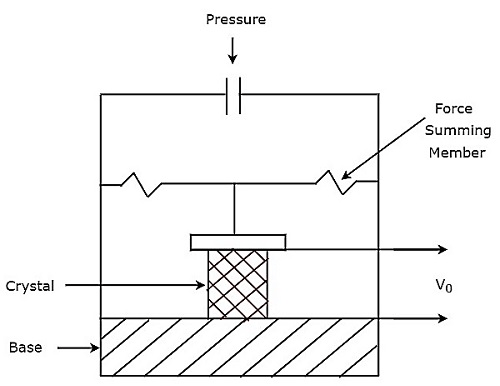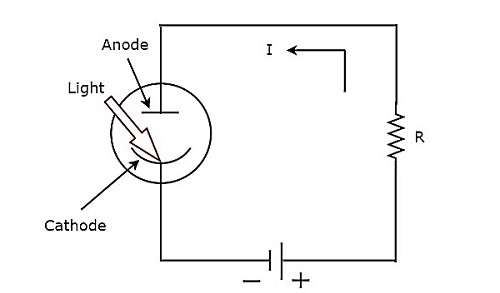Transducers
Transducers essentially change one type of energy into another. Electrical transducers are those that change non-electrical types of energy into electrical forms of energy. The graphic below depicts the block diagram of an electrical transducer.

The output of an electrical transducer, as seen in the illustration, has electrical energy. An electrical transducer's output is equal to its non-electrical input in terms of energy.
Types of Electrical Transducers
Electrical transducers may generally be divided into two categories.
- Active Transducers
- Passive Transducers
Let's now have a quick discussion regarding these two sorts of transducers.
Active Transducers
Active transducers are those that have the ability to generate electrical quantities like voltage and current. Due to the fact that it doesn't require an external power source, it is also known as a self-generating transducer.
The graphic below displays the active transducer's block diagram.

An electrical quantity (or signal), corresponding towards the non-electrical input quantity, will be produced by the active transducer as seen in the picture (or signal).
Examples
Following are the examples of active transducers.
- PiezoElectric Transducer
- PhotoElectric Transducer
- ThermoElectric Transducer
Passive Transducers
Passive transducers are those that cannot generate electrical quantities like voltage or current. However, it causes a change in one of the passive parts, such as the capacitor, inductor, and resistor (R, L) (C). An external power source is needed for passive transducers.
In the picture below, a block schematic of a passive transducer is displayed.

According to the fluctuation in the non-electrical input amount, the passive element will vary when using a passive transducer, as illustrated in the picture (or signal).
Examples
Following are the examples of passive transducers.
- Resistive Transducer
- Inductive Transducer
- Capacitive Transducer
Active Transducers
An active transducer is one that converts a non-electrical value into an electrical amount. Let's think about some non-electrical variables, such as pressure, light illumination, and temperature. Accordingly, based on the non-electric quantity that we select, we will obtain the following three active transducers.
- Piezo Electric Transducer
- Photo Electric Transducer
- Thermo Electric Transducer
Let's talk about each of the three active transducers individually now.
Piezo Electric Transducer
When an active transducer generates an electrical amount equal to the pressure input, it is referred to as a piezoelectric transducer. The three chemicals listed below have a piezoelectric effect.
- Quartz
- Rochelle salts
- Tourmaline
These three substances, in increasing sequence, show the piezoelectric effect: tourmaline, quartz, and rochelle salts. Rochelle salts, quartz, and tourmaline are the three materials with the highest mechanical strengths.
Due to its moderate piezoelectric effect and medium mechanical strength among the three piezoelectric materials, quartz is utilized as a piezoelectric transducer.
Quartz Transducer
The schematic of the Quartz transducer's circuit is displayed in the image below. Quartz crystal is positioned between the base and the force-summing component, as illustrated in the picture. On both sides of the quartz crystal, there are metal electrodes that may be used to measure the output voltage.

A pressure transducer's output voltage, V0 will be
Vo=Q/C
Photo Electric Transducer
When an active transducer generates an electrical amount that is comparable to the lightning of a light input, it is referred to as a photoelectric transducer. The diagram of the photoelectric transducer's circuit is displayed in the image below.

Below is a description of how a photoelectric transducer operates.
Step 1: When light strikes the photoelectric transducer's cathode, it releases electrons.
Step 2: The circuit's photoelectric transducer generates a current, I, as a result of the electrons' attraction to the anode.
To calculate the sensitivity of the photoelectric transducer, apply the formula below.
S=I/i
Where,
- S stands for the photoelectric transducer's sensitivity.
- I is the photoelectric transducer's output current.
i represents the intensity of the photoelectric transducer's light input.
Thermo Electric Transducer
When an active transducer generates an electrical amount that is equal to a temperature input, it is referred to as a thermoelectric transducer. Examples of thermoelectric transducers are the given two transducers.
- Thermistor Transducer
- Thermocouple Transducer
Let's now talk about each of these two transducers separately.
Thermistor Transducer
Thermal resistors are resistors whose resistance varies with temperature, and its short name is Thermistor. Thermistor's temperature coefficient is negative. In other words, a thermistor's resistance drops as temperature rises.
The relationship between thermistor resistance and temperature may be expressed mathematically as
R1=R2e(β[1/T1-1/T2])s
Where,
- R1 is the resistance of thermistor at temperature T10K
- R2 is the resistance of thermistor at temperature T20K
β is the temperature constant
Thermistor transducers have the benefit of producing a quick and reliable response.